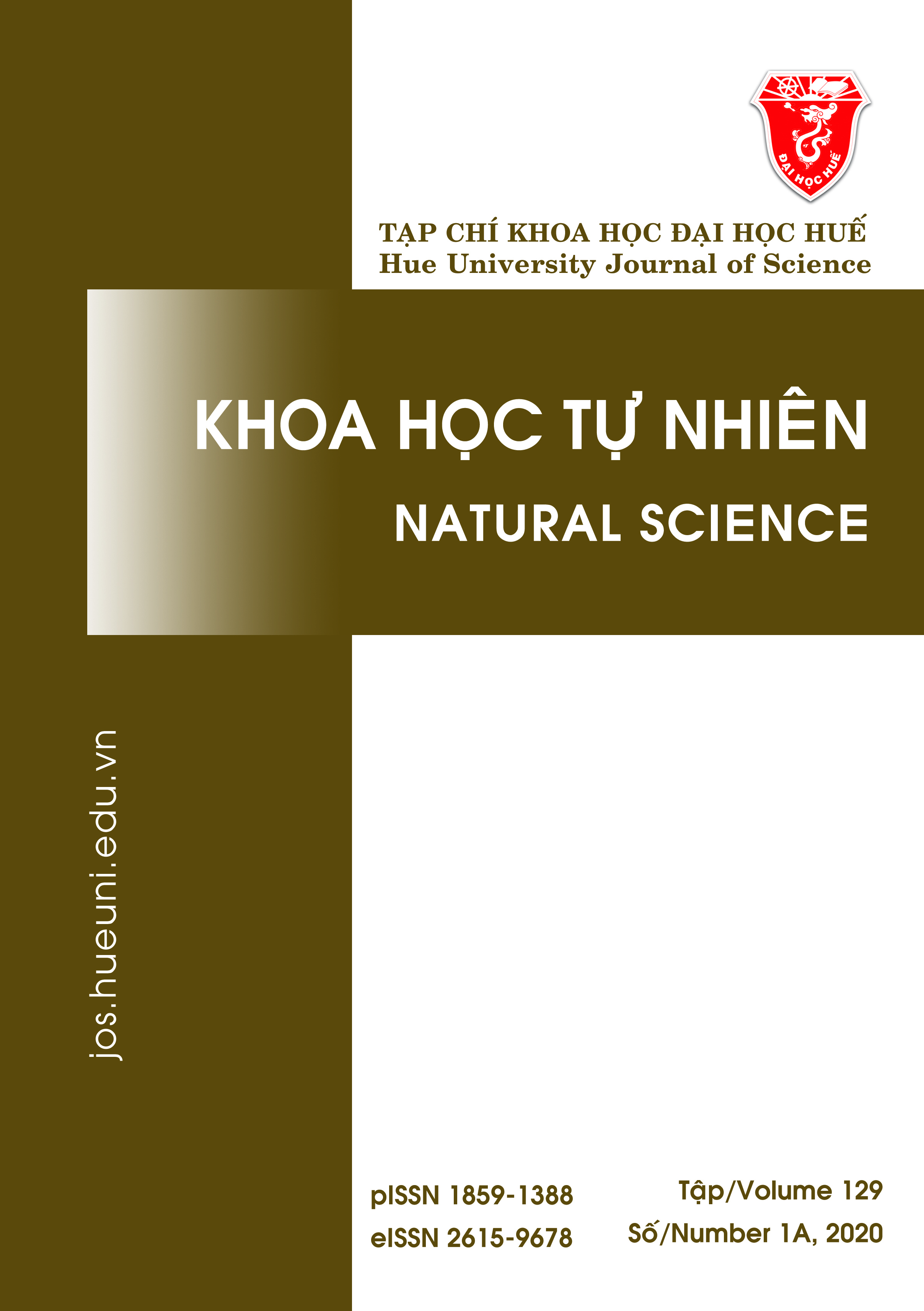Tóm tắt
Betacyanin được ứng dụng làm chất màu thực phẩm hoặc mỹ phẩm thay thế chất tạo màu hóa học. Nghiên cứu này sử dụng phương pháp tối ưu hóa bề mặt đáp ứng để đánh giá ảnh hưởng đồng thời của tỉ lệ dung môi:nguyên liệu, thời gian áp dụng vi sóng và pH lên quá trình trích ly betacyanin từ vỏ quả thanh long. Hàm lượng acid ascorbic bảo quản, phenol tổng số và khả năng khử DPPH của dịch chiết betacyanin thu nhận ở điều kiện tối ưu đã được đánh giá. Tại điều kiện tối ưu: tỉ lệ dung môi: nguyên liệu = 53 (v/w); thời gian chiết = 91 (giây) và pH = 5,3, hàm lượng betacyanin thu được là 72,13 (mg/100 g). Dịch chiết được bổ sung acid ascorbic ở nồng độ 0,5% (w/v) có thời gian bảo quản dài nhất. Khả năng khử gốc tự do DPPH của dịch chiết có giá trị IC50 là 48,02% (v/v); hàm lượng phenol tổng số là 41,41 mg GAE/ 100 mL.Tài liệu tham khảo
- Celli GB, Brooks MS. Impact of extraction and processing conditions on betalains and comparison of properties with anthocyanins — A current review. Food Research International. 2017;100:501-509.
- Moßhammer M, Stintzing F, Carle R. Colour studies on fruit juice blends from Opuntia and Hylocereus cacti and betalain-containing model solutions derived therefrom. Food Research International. 2005;38(8-9):975-981.
- Linh ĐTM, Mai NTQ, Duyên HT, Nghi TH. Nghiên cứu quá trình tạo bột màu betacyanin thu nhận từ vỏ quả thanh long (Hylocereus undatus). Tạp chí Khoa học Công nghệ và Thực phẩm. 2018;17(1):21-31.
- Cảnh N. Quy hoạch thực nghiệm, Nhà xuất bản Đại học Quốc gia Thành phố Hồ Chí Minh; 2016.
- Sharma S, Hullatti KK, Kumar S, Brijesh KK. Comparative antioxidant activity of Cuscuta reflexa and Cassytha filiformis. Journal of Pharmacy Research. 2012;1:441-443.
- Ramli NS, Ismail P, Rahmat A. Influence of Conventional and Ultrasonic-Assisted Extraction on Phenolic Contents, Betacyanin Contents, and Antioxidant Capacity of Red Dragon Fruit (Hylocereus polyrhizus). The Scientific World Journal. 2014;2014:1-7.
- Woo K, Ngou F, Ngo L, Soong W, Tang P. Stability of Betalain Pigment from Red Dragon Fruit (Hylocereus polyrhizus). American Journal of Food Technology. 2011;6(2):140-148.
- Wong Y, Siow L. Effects of heat, pH, antioxidant, agitation and light on betacyanin stability using red-fleshed dragon fruit (Hylocereus polyrhizus) juice and concentrate as models. Journal of Food Science and Technology. 2014;52(5):3086-3092.
- Bilyk A, Howard M. Reversibility of thermal degradation of betacyanines under the influence of isoascorbic acid. Journal of Agricultural and Food Chemistry. 1982;30(5):906-908.
- Quế PTT, Thủy NTT, Ngọc TTA, Nghĩa LD. Ảnh hưởng của điều kiện chế biến và bảo quản đến sự ổn định màu betacyanin trong nước ép thịt quả thanh long ruột đỏ (Hylocereus polyrhizus). Tạp chı́ Khoa học Trường Đại học Cần Thơ. 2017;51:16-23.
- Wu L, Hsu H, Chen Y, Chiu C, Lin Y, Ho JA. Antioxidant and antiproliferative activities of red pitaya. Food Chemistry. 2006 03;95(2):319-327.
- Naczk M, Shahidi F. Extraction and analysis of phenolics in food. Journal of Chromatography A. 2004 Oct 29;1054(1-2):95-111.
- Pichayajittipong P, Thaiudom S. Optimum Condition of Beta-Cyanin Colorant Production from Red Dragon Fruit (Hylocercus polyrhizus) Peels using Response Surface Methodology. Chiang Mai University Journal of Natural Sciences. 2014;13(1):483-496.

công trình này được cấp phép theo Creative Commons Ghi công-Chia sẻ tương tự 4.0 License International .
Bản quyền (c) 2020 Array




